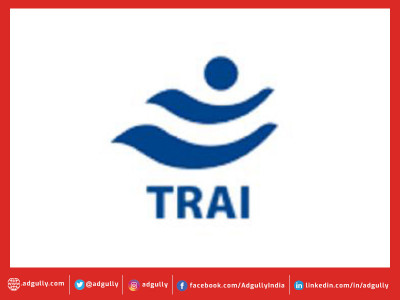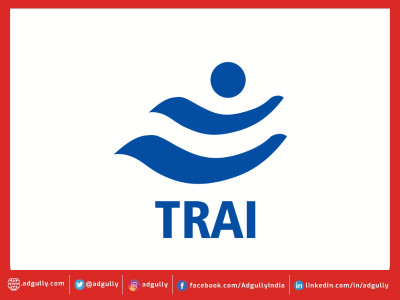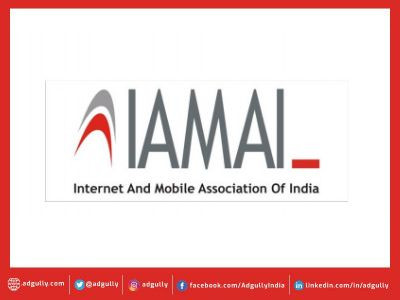TRAI tariff order: Losing sight of the wood for the trees - Pavan R Chawla
When the hearing on the TRAI’s new tariff order ends next week, either of the ‘aggrieved’ parties will appeal – so don’t expect the issue to be resolved before September under any circumstances.
The lines, however, have been well and truly drawn -- chiseled into rock, and deep. Let’s see:
Laudably, the entire issue has stemmed from a concern for the consumer – to give him the power to choose exactly which channels he wants to watch. To that extent, great. Let the consumer decide which channels he wants to watch, and pay for those only. But to unilaterally step in and fix terms of offering a channel priced above Rs 20 on a la carte and not as part of a bundle… that, in principle, is as restrictive of a broadcasters’ right to conduct their business as is the forced restriction on Music Royalties that copyright owners of music tracks can receive from the close to 400 private FM radio networks nation-wide or the broadcasters, in yet another example, of being forced to share prohibitively expensive India matches with the pubcaster, which adds its own advertising to the feed it receives for free from private broadcasters who pump in humungous investments.
Look at private FM radio. Promoters have made massive investments in their networks, starting from astronomically high license fees especially in the early days. But somehow, inspite of having become the medium with the third highest CAGR (per the KPMG-FICCI report released earlier this year) private FM Radio networks are barred from their basic business right to broadcast news, unless it’s a copy-paste of news broadcast on AIR, and then usable only if the already beleaguered private FM networks pay a fee from Rs 50 lakhs and down depending upon the category of the city or location they operate out of. And the content-starved medium can offer only film music. But then, the cash-poor medium lobbies to license film music from content producers at a pittance of a royalty fee. This chain restricts the flowering of the music industry in India, and not just radio.
Coming to the issue at hand.
Does TRAI have the jurisdiction to issue tariff orders pertaining to a product that comes under the Copyright Act? Not to my mind.
Trai’s tariff order is an attempt to make channel pricing transparent, although not necessarily cheaper. Under the new tariff regulations, consumers would get 100 free-to-air channels for a price of Rs130 plus taxes. On price fixing, past history has been filled with accusations, counter-accusations and bitter recrimination. Earlier, the tariffs were more of an understanding based on negotiations between the distribution platform owners (DPOs) like cable networks and direct-to-home operators and television broadcasters.
Now, broadcasters will declare rates to the customers. Earlier, there was no relationship between the rates the channels negotiated with the DPO and those that reached the consumers. The customers were never clear about what they were paying for which channels. With the new tariff order, consumers will know the difference between a free-to-air and a pay TV channel. Well, it is great for them to know. But for the suppliers of the services to be forced to a price restriction, and that too for content which is governed by the Copyright Act? Not on.
Forcing the more premium channels – the ones priced above Rs 20 – to not be part of bundled packs will hurt the industry – it could leave smaller TV channels which ride piggyback on bigger, more popular channels in bundles and packages, exposed, un- or under-subscribed, and facing closure, because it’s only the opportunity to see (OTS) which, supported by good content, can equal viewership or TVRs which alone can bring in ad revenues, particularly for stand-alone channels. So, broadcasters need to protect their bouquets. Or the smaller channels not subscribed to will either close down or be forced to give up their marginally tiny subscription revenues and go FTA in a last-ditch effort.
One might argue that the Darwinian rule applies to all businesses including the smaller channels, but that would be fair only if all businesses were left to operate independently, without the limitations of restrictive pricing orders.
If this restrictive ‘don’t bundle’ rule indeed cause an exodus of the smaller channels to the FTA bandwagon, we’ll see the same spectre witnessed during the early days of C&S TV – the scramble for a place on distribution platforms offerings.
It’s definitely bad for everyone including the cable, DTH and broadcast industry. If today, five sports channels are available bundled for a price, but customers watch only one, then in future they will select one and dump the other 4, which will ultimately close down. Oh, and the new rule will end all existing customer benefit schemes like the Rs 99 pack, Rs 199 pack offered to provide wider and selected better range of offers.
One is aware the cable fraternity is happy with what the order is proposing. A senior editor in the distribution space told me, “Though the logistics seem difficult, it ‘clears the air’. They say broadcasters bundle, inflate mrps – to the extent that channels with MRPs of 100-odd are sold at maybe 7 or 8 rupees per. The difference is attributed to underdeclaration, which has given the cable industry a bad name.”
My view? No, first my experience. Across over a decade when there was only cable and I was a cable subscriber, I have never – repeat, never – received an official, pucca bill by my cable operator, and I’ve been a customer of major MSOs of Mumbai. That deprives the government of taxes, and having been completely non-addressable, deprived broadcasters through major, massive underdeclarations. That is an undeniable fact. A major disadvantage to the government, broadcasters and consumers, which the DTH pipeline has cured.
And another thing. Most of the DTH platforms are in the red -- as are all the MSOs. The only players in the value chain that have grown over the years are the broadcasters. Who obviously, most certainly, must be the single entity that determines how they package and offer their content offerings to their customers. As indeed, should the MSO and DTH platforms, built over a decade of similar deep investments in India. In fact, today, every single DTH platform has been deeply in the red, but still pressing ahead with investments even in the face challenging revenues earned, just to keep working for the golden business turnaround by providing worldclass technology and quality of service throughout India. Should there be restrictive pricing-related orders that clip their ARPUs that would arguably to only degrow their revenues, but also eventually hit future upgrades through a hit on tech and quality investments? Bundles packs must be allowed. But more germaine is the what I mentioned above – only the broadcaster scan decide their channel price points and sale offerings to their customers.
Trai’s proposed guidelines on tariffs stipulate that the bouquet price cannot be less than 85% of the maximum retail price of individual channels. Spends will go down from consumers, who will want to cherry pick and pay for half the channels. Great, that is the consumers’ first and inalienable right. But why deprive them of the ability to receive much larger numbers of channels packaged in bundles?
Where will that leave the industry? There will be no winners in the industry as it unfolds. As I said earlier, current status is that MSOs and nearly all DTH players are in the red; regardless of the size of initial investments, in a market as big as India, how can it take ten years for DTH brands – which are still trying -- to break even?
Should we lose sight of the wood for the trees? Yes the customer is king, and that isn’t lip service. Everything must be done for the customer, to ensure continuity of association and business growth, apart from the equally important social obligations. However, I believe a restrictive way ‘forward’ will hurt customers because it will eventually pressure the content, entertainment, infotainment, media and news industry by causing smaller channels to wither away, reducing variety of genres and exposure for increasingly aspiring millions of new consumers seeing a digital sunrise in India today. Do we want to hit the media and entertainment industry by depriving it of future-investment readiness due to restrictions? The quality of content will go down, with the exception of some big conglomerates. And with all the life-threatening pressure on smaller entities, there will be major potentially-monopolistic consolidation. Exaggerating to make a point, but soon we’ll have just about three or four big, multiple-media biggies calling the shots across broadcast, distribution and marketing avenues.
But of course, meanwhile, the OTT side of the universe will have continued to disrupt and take away audiences from television to mobile. Unless, of course, someone in their wisdom decides to wake up and bring out another rusty pair of Gothic era shears to clip the digital wings. All for the consumer.
Pavan R Chawla is an award-winning content and communication expert across television, print, online and digital, and has been closely associated with the Broadcast and OTT space for over two decades now.














Share
Facebook
YouTube
Tweet
Twitter
LinkedIn